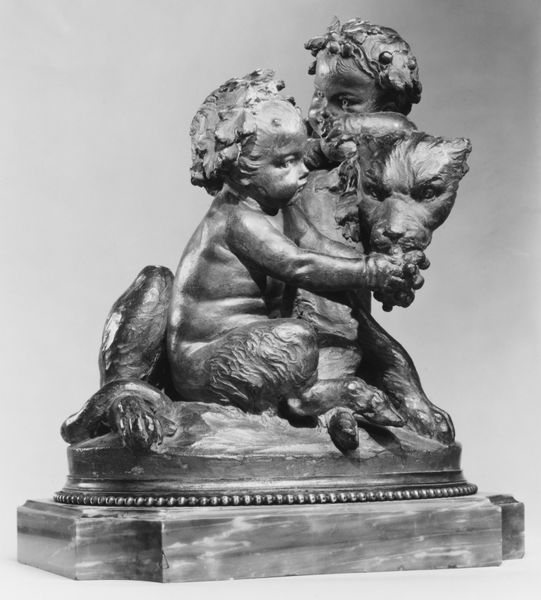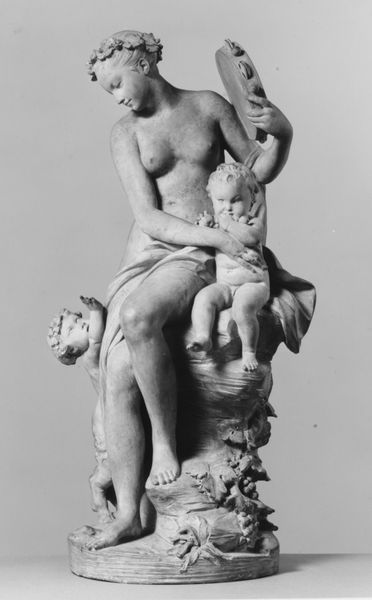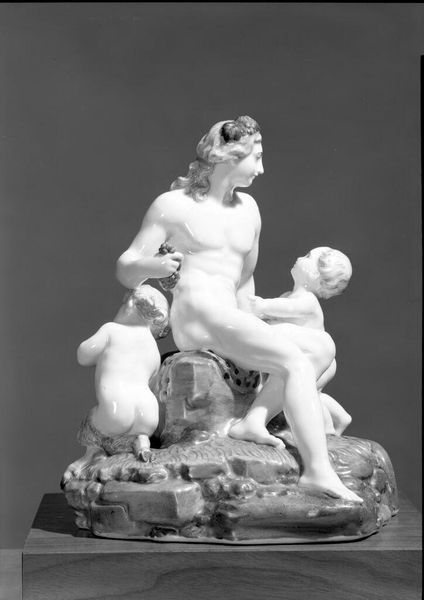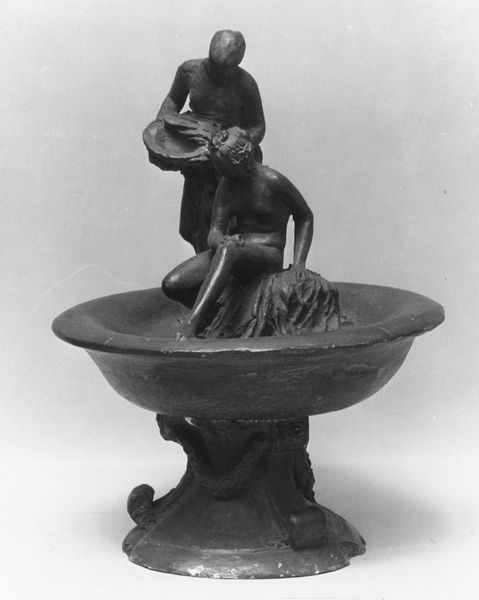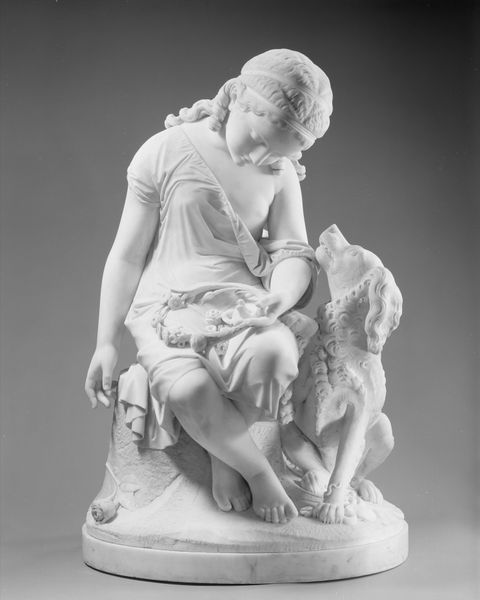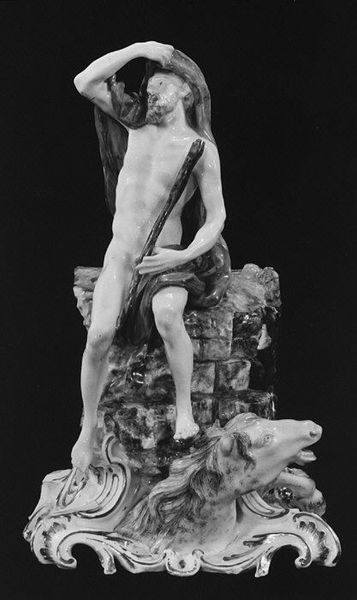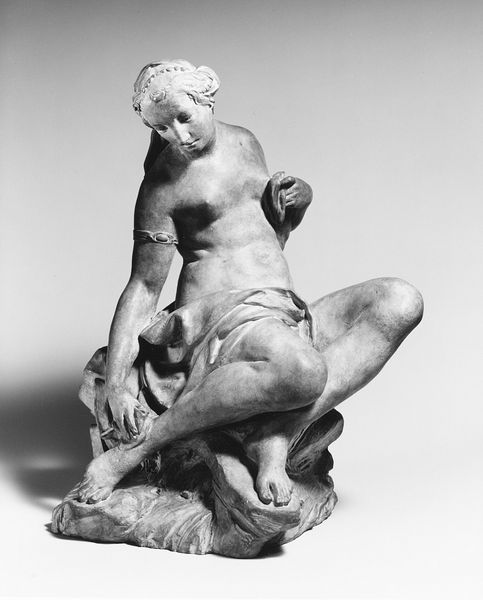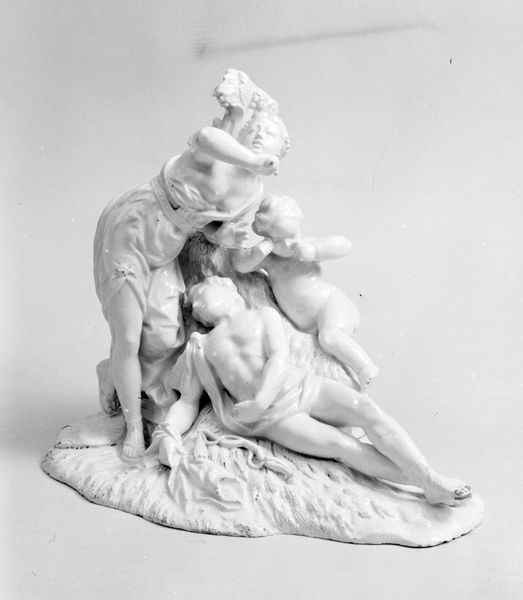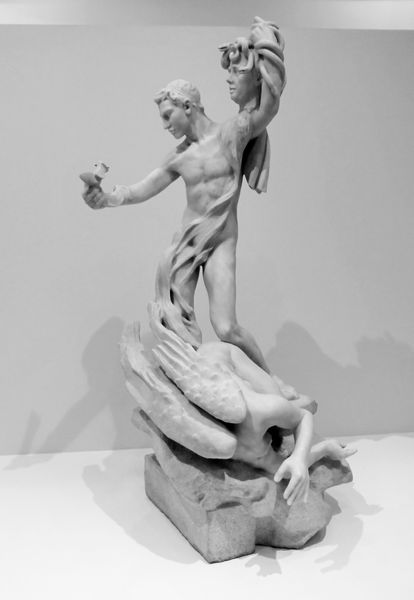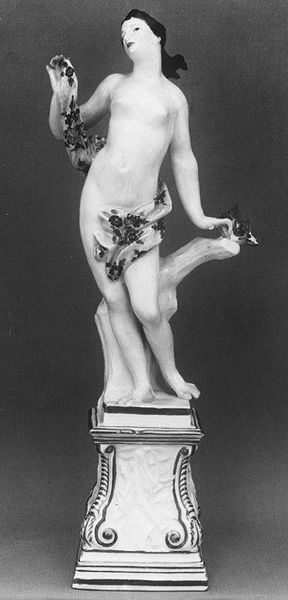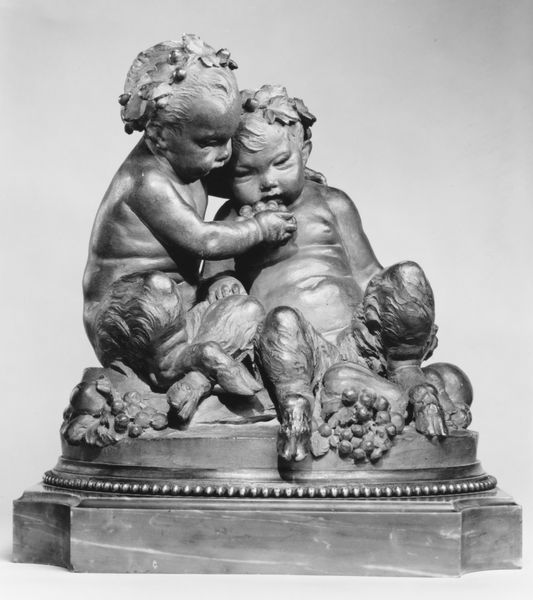
sculpture, marble
#
allegory
#
sculpture
#
female-nude
#
sculpture
#
decorative-art
#
marble
#
nude
#
rococo
Dimensions: Height (overall): 8 ft. 6 1/2 in. (260.4 cm); Height (figure): 59 in. (149.9 cm); Height (console): 21 1/2 in. (54.6 cm); Height (basin): 71 1/4 in. (181 cm)
Copyright: Public Domain
Editor: Right, so here we have Louis Claude Vassé’s marble sculpture, *Nymph drying her hair*, carved around 1761-1763. I’m immediately struck by its sort of sensual stillness, and it has that classic Rococo aesthetic with its elegance and ornate details. How do you interpret this work? Curator: This sculpture exists in a complex historical context. On one hand, it exemplifies the Rococo period’s embrace of sensuality and mythological themes favored by the French aristocracy on the verge of revolution. But what does it mean to portray a female nude figure, literally elevated on a pedestal, at this specific juncture? Where does this nymph stand within patriarchal social structures and expectations of women? Editor: I see what you mean, she’s definitely idealized. Is there also some kind of symbolism attached to her actions, or to the vase she leans on, or maybe even the shells and snakes around the base? Curator: Absolutely. The bathing nymph has long been a trope of both purity and eroticism within a male-dominated art world. The snakes winding through the shells can signal hidden dangers or temptations linked to female sexuality in mythology. Knowing that, how might we interpret Vassé’s sculpture as upholding, or even challenging, existing norms? Do you see a hint of defiance or knowing self-awareness in her gaze? Editor: It’s subtle, but I can see that now. It makes me think about the limited roles women were afforded, even in artistic representation, at that time. Curator: Exactly. And understanding those limitations helps us decode not only the artwork itself but also the power dynamics embedded within 18th-century French society. Editor: This has given me a completely different lens to look through – seeing her beyond the pure aesthetic. Thanks! Curator: My pleasure! It's about pushing the boundaries of how we read art.
Comments
No comments
Be the first to comment and join the conversation on the ultimate creative platform.


